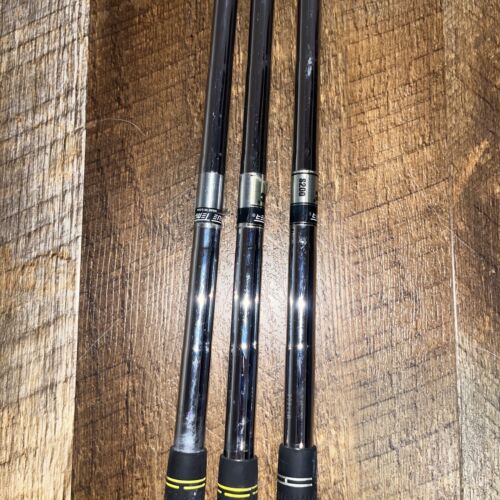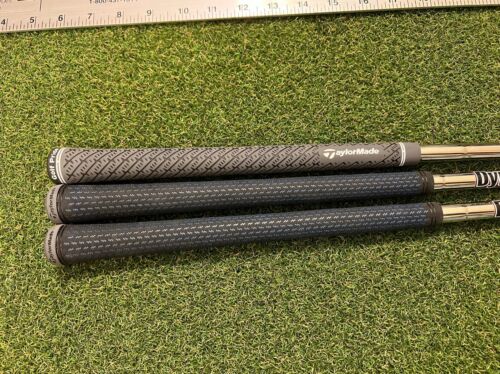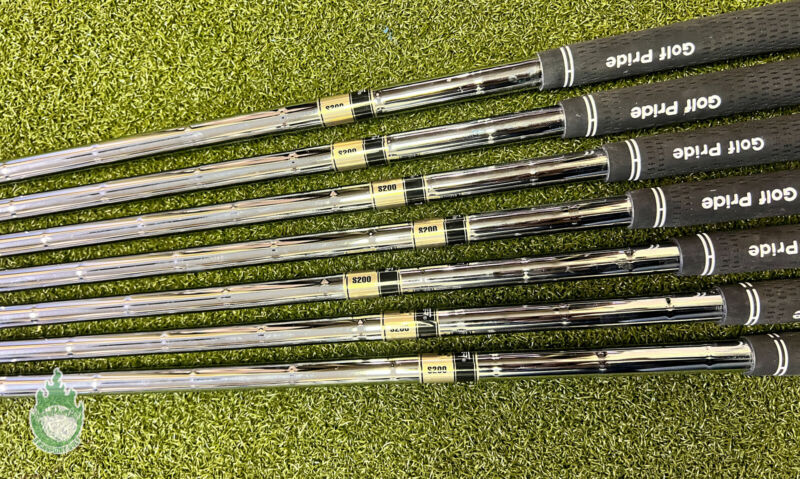S200 vs. S400 Shafts: What’s the Differences?
Players’ choices of golf shafts can determine how well they perform on the course. The golf shaft is so important that it has often been dubbed “the golf club’s engine”.
There are varying types of golf shafts, each suited for different purposes and players.
For example, while golfers who have shorter and faster swings prefer stiffer shafts, the reverse is the case for players whose swings are slower and longer.
S200 vs. S400 Shafts: What are the Differences?

In this article, we explore the features and differences between the S200 and S400 golf shafts.
Height
How high a golf ball flies after being hit is determined by several factors including the thinness of the air, swing speed and angle and body movement.
However, the type of golf shaft used also plays a role in determining this.
The S400 has a higher launch angle, meaning that it typically sends the ball higher into the air than the S200 with its lower launch angle.
Distance
The S200’s low launch angle gives it the advantage in terms of shot distance.
However, players who require more height rather than a farther distance on their shots would do better with the S400, as it has a higher launch angle.
Weight

Shaft weight is a significant determinant of shot performance.
Lighter golf shafts tend to produce faster club speeds and, therefore, higher shots with more spin.
Shafts with more weight, on the other hand, produce slower swing speeds and less height on shots.
The S400 offers a wide range of shaft weight options ranging from 124-137 grams, suitable for various players.
Options in this regard are more limited with the S200 (127-130). This means that the S400 has every weight option that the S200 offers.
No matter what a player’s weight preferences may be, such a player can find a suitable option in the S400.
Flex
Flex means how much a golf shaft can bend when being swung.
With the right flex, players can hit shots in the right direction and distance. Different golf shafts have different degrees of flex.
Generally, people who have quick swings do better with stiffer shafts, while those who have slower-flowing swings would benefit the most from softer shafts.
Flex options can range from Extra Stiff for users with particularly fast club speeds to Regular and Ladies.
The S200 has a wider variety of flex types available including Extra Stiff, Regular, and Stiff for players to select from.
However, users of the S400 are restricted to the Stiff category.
Swing Tempo and Transition

Swing tempo and transition can also be influenced by the choice between S200 and S400 shafts.
Tempo refers to the overall rhythm of a golfer’s swing, while transition is the moment when the backswing shifts to the downswing.
A golfer’s swing tempo can be described as either slow, medium, or fast.
The S200 shaft, with its lighter weight and more flexible options, is better suited for golfers who prefer a smoother, slower tempo.
The added flex allows for a more leisurely transition from backswing to downswing, helping to maintain consistency in shot-making.
This results in greater accuracy and control for those with slower swing tempos.
Conversely, the S400 shaft, being heavier and available only in the stiff category, is better suited for golfers with faster swing tempos.
The additional weight and stiffness help to stabilize the club during the faster transition, which is common in high-tempo swings.
This stability can lead to improved accuracy and shot dispersion for golfers with quicker tempos.
Clubhead Feel and Feedback
Another crucial aspect to consider when selecting between the S200 and S400 shafts is the impact on clubhead feel and feedback.
Clubhead feel refers to how a golfer perceives the weight and balance of the club during the swing, while feedback is the sensation transmitted to the golfer’s hands upon impact with the golf ball.
The S200 shaft, being lighter and more flexible, generally provides an enhanced feel and improved feedback for players who prefer a more sensitive connection with the clubhead.
This heightened sense of control can help golfers make adjustments to their swing during the round, promoting better overall performance.
In contrast, the S400 shaft, with its heavier weight and stiffer flex, delivers a more solid and stable feel throughout the swing.
The additional weight can help players maintain a consistent swing plane, which is particularly beneficial for those who struggle with off-plane swings.
While the feedback might be slightly dampened compared to the S200, the S400’s stable feel can instill confidence in golfers, leading to improved shot-making and consistency on the course.
Final Words: Dynamic Gold S200 or S400?
The S200 and S400 provide many unique advantages for their users. However, there are some noticeable differences.
While the S200 provides more options in terms of flex, the S400 has more weight options for players to choose from.
Furthermore, users of the S200 can expect to experience a lower launch on their shots than those using the S400.
Players would be well advised to choose which of these options suits their preferences and needs.
Related Posts:
- Is Golfpass Worth It?
- Ping Anser 3 vs Anser 2 Putters: A Comparison
- Where Are Srixon Irons Made? Japan or USA?
- PXG 0311P vs P790 Irons: Which Is Better?
- One Shot Slice Fix Review from PGA!

Want to Get Better at Golf?
Get "Ben Hogan's Five Lessons" and join thousands of others improving their golf skills.
Learn the Fundamentals: Stance and Posture > Golf Grip > The Swing.
This book has LOADS of positive reviews. THOUSANDS OF REVIEWS. A MILLION COPY SOLD. CHEAP!
Get the Book Here